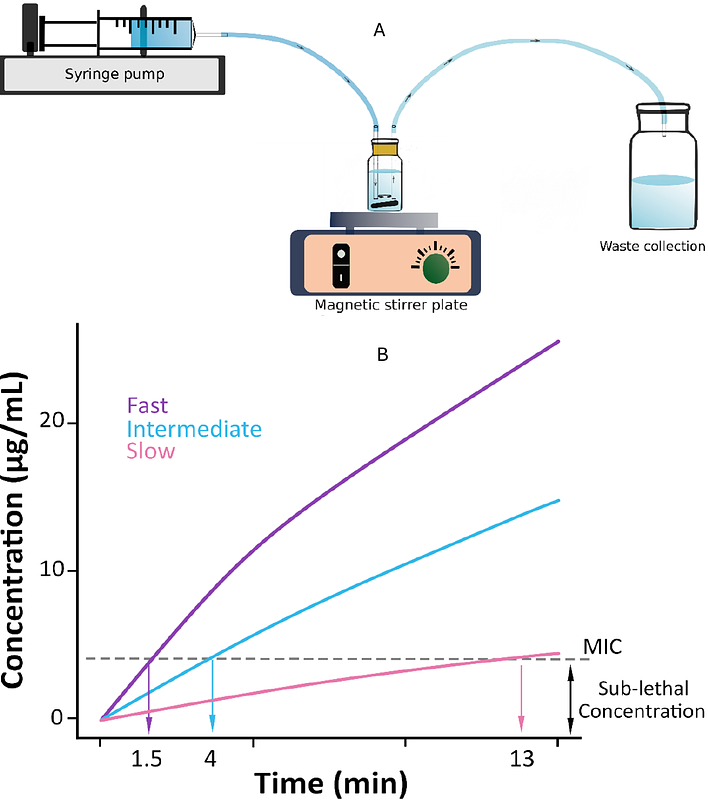Speed Matters: Accelerated Pharmacokinetics Reduce Persisters in Escherichia coli

Speed Matters: Accelerated Pharmacokinetics Reduce Persisters in Escherichia coli
Ali, K. M.; Murphy, R.; Zanchi, C.; Zunk-Parras, S. A.; Rodriguez-Rojas, A.; Rolff, J.
AbstractPersister cells are bacterial cells that form small subpopulations and are refractory to antimicrobials. Importantly, those cells can cause the relapse of an infection and also provide a starting point for antimicrobial resistance evolution. By now, several mechanisms of persister formation have been studied. For example, it has been shown that a short exposure to sublethal concentrations of antimicrobials can induce persister formation. Given this, we hypothesised that the pharmacokinetics, the temporal changes of drug concentrations under treatment, could impact persister formation. We predicted that the longer bacteria spend under sublethal drug concentrations, the more persisters would form. Using a set-up with small chemostats and the antimicrobial peptide Pexiganan, we indeed found that faster pharmacokinetics resulted in lower persister numbers compared to slower pharmacokinetics. This finding provides a proof of principle that pharmacokinetics, which can be influenced by treatment procedures, has consequences for persister formation. Our results suggest that faster pharmacokinetics could be useful to minimize persister numbers and hence to lower the risks of relapse or resistance evolution.